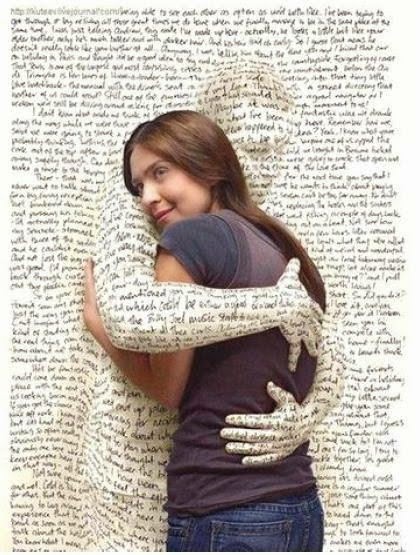 |
| From the Writing Picture Prompts Pinterest board |
Isn’t it wonderful, being a writer? The joy! The freedom! Anywhere, anytime, inspiration may strike. And we’re ready, with our notepads and laptops and smart phones, ready to spin our ideas in whichever direction they want to go. That snippet of dialogue, that flash of insight, that exquisite image – from any of these, an entire poem or essay or novel can grow. We just have to run with it.
But run where? There are so many possibilities. So many directions. Freedom, it seems, is also a curse. What is a novel, after all, but what author David Stevenson once described as a million ways to go wrong?
If brain research is any indicator, poets have the right idea when they work within forms. While the rest of us run freely, poets quietly and mindfully hold the writer’s equivalent of a yoga pose, enjoying the broader creative perspective that paradoxically comes from constraint.
“We break out of the box by stepping into shackles,” Jonah Lehrer says, citing a study led by Janina Marguc at the University of Amsterdam
Calling the brain “a neural tangle of near infinite possibility,” Lehrer explains that without constraints, our brains zero in on what not to notice, and as a result creativity suffers. “The artificial requirements of the sonnet are just another cognitive obstacle,” he says, “a hurdle that compels the mind to think in a more holistic fashion. Unless poets are stumped by their art, unless they are forced to look beyond the obvious associations, they’ll never invent an original line. They’ll be stuck with clichés and banalities, with predictable adjectives and boring verbs. And this helps explain the stubborn endurance of poetic forms: because poets need to find a rhyming word with exactly three syllables, or an adjective that fits the iambic scheme, they end up uncovering all sorts of unexpected associations.”
This is why writing exercises can be so effective, even for experienced writers. Cognitive push-ups, mindful poses – these actually nudge us toward originality, not away from it. Plus the stakes are low, and that never hurts.
Blocked? In a rut? Stuck in the forever-middle? Indulge in an exercise, ten or fifteen minutes of writing push-ups and poses, and see what creative ways of thinking you unleash. Then as O’Connor suggests, start looking for the limitations imposed by your work as it unfolds.
Not sure where to start? You’ll find writing exercises at The Self-Made Writer, at Poets & Writers, and at the Warren-Wilson website. Pinterest even has a board of Writing Picture Prompts.
Co-founder of 49 Writers, Deb
Vanasse has authored more
than a dozen books. Her most recent is Cold
Spell, a novel that “captures the harsh beauty of the terrain as well as
the strain of self-doubt and complicated family bonds,” according to Booklist. Deb lives and
works on Hiland Mountain outside of Anchorage, Alaska, and at a cabin near the
Matanuska Glacier. This post also ran at www.selfmadewriter.blogspot.com, and in a previous version on this site.
Vanasse has authored more
than a dozen books. Her most recent is Cold
Spell, a novel that “captures the harsh beauty of the terrain as well as
the strain of self-doubt and complicated family bonds,” according to Booklist. Deb lives and
works on Hiland Mountain outside of Anchorage, Alaska, and at a cabin near the
Matanuska Glacier. This post also ran at www.selfmadewriter.blogspot.com, and in a previous version on this site.
Would you like to write a guest
post relevant to Alaska’s literary community? Email 49writers (at) gmail.com or
debvanasse (at) gmail.com.
post relevant to Alaska’s literary community? Email 49writers (at) gmail.com or
debvanasse (at) gmail.com.
